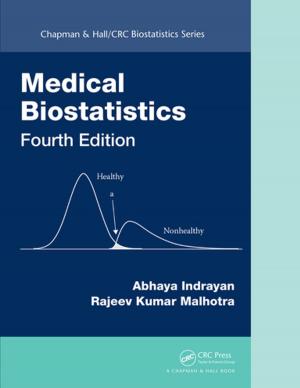Grasping the Moment
Sensemaking in Response to Routine Incidents and Major Emergencies
Nonfiction, Science & Nature, Technology, Industrial Health & Safety, Social & Cultural Studies, Social Science| Author: | Christopher Baber, Richard McMaster | ISBN: | 9781317124955 |
| Publisher: | CRC Press | Publication: | October 3, 2016 |
| Imprint: | CRC Press | Language: | English |
| Author: | Christopher Baber, Richard McMaster |
| ISBN: | 9781317124955 |
| Publisher: | CRC Press |
| Publication: | October 3, 2016 |
| Imprint: | CRC Press |
| Language: | English |
The ways in which organizations make use of information available to them to make decisions and manage activity is an essential topic of investigation for human factors. When the information is uncertain, incomplete or subject to change, then decision making and activity management can become challenging. Under such circumstances, it has become commonplace to use the concept of sensemaking as the lens through which to view organizational behavior. This book offers a unique perspective on sensemaking through its consideration of the variety of ways in which Incident Response is managed by the Police. As an incident moves from the initial call handling to subsequent mobilization of response to first officer attending, a wide range of information is acquired, processed and shared, and the organization (and individuals who work within it) face challenges of making sense of the situation to which they are responding. Moving from routine incidents to large-scale emergencies, the authors explore how sensemaking is influenced and affected by the challenges of interoperability within and between organizations. In addition, the book develops a view of sensemaking which draws on the theory of distributed cognition, focusing in particular on the question of how the technology that is available to Police personnel can support (and sometimes thwart) their ability to make sense of the unfolding situation. The main argument in this book is that sensemaking is distributed cognition, and that cognitive processes involved in sensemaking are mediated through interactions with artifacts and other agents. Three perspectives of sensemaking as distributed cognition are presented: making sense with artifacts, making sense through artifacts, and making sense through collaboration.
The ways in which organizations make use of information available to them to make decisions and manage activity is an essential topic of investigation for human factors. When the information is uncertain, incomplete or subject to change, then decision making and activity management can become challenging. Under such circumstances, it has become commonplace to use the concept of sensemaking as the lens through which to view organizational behavior. This book offers a unique perspective on sensemaking through its consideration of the variety of ways in which Incident Response is managed by the Police. As an incident moves from the initial call handling to subsequent mobilization of response to first officer attending, a wide range of information is acquired, processed and shared, and the organization (and individuals who work within it) face challenges of making sense of the situation to which they are responding. Moving from routine incidents to large-scale emergencies, the authors explore how sensemaking is influenced and affected by the challenges of interoperability within and between organizations. In addition, the book develops a view of sensemaking which draws on the theory of distributed cognition, focusing in particular on the question of how the technology that is available to Police personnel can support (and sometimes thwart) their ability to make sense of the unfolding situation. The main argument in this book is that sensemaking is distributed cognition, and that cognitive processes involved in sensemaking are mediated through interactions with artifacts and other agents. Three perspectives of sensemaking as distributed cognition are presented: making sense with artifacts, making sense through artifacts, and making sense through collaboration.















